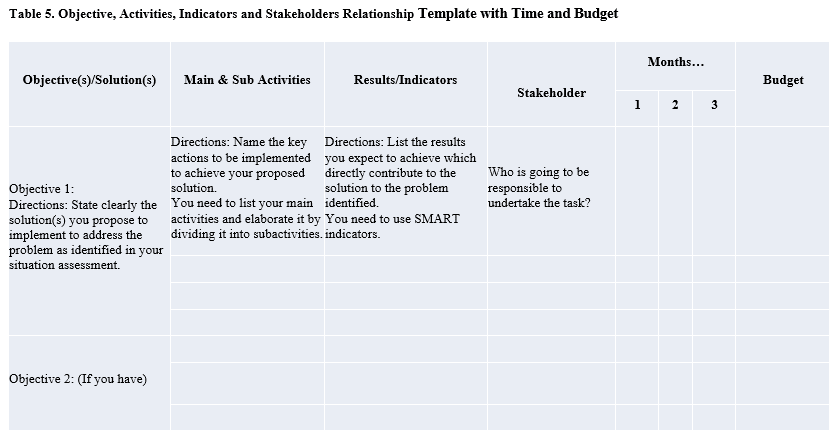Information

Summary: Discusses the importance of defining measurable indicators to track project progress and outcomes, facilitating informed decision-making and project evaluation.
Learning Objectives:
Indicators are important for coordinators, managers and evaluators to follow up and examine the success and completion of the project and its tasks (Parmenter, 2015). Therefore, it is important for proposal writers to identify objective and verifiable indicators. Each indicator should be related with the activities, tasks and/or outputs of the Project.
In order to follow up the activities and tasks, SMART indicators should be identified (Shahin & Mahbod, 2007, p.27-29). SMART means:
Examples:
It is good to use quantitative statements. Also you can support it with qualitative statements as well.
Additionally, you can refer target groups and geographic location in your indicators, if it is requested or deemed necessary.
